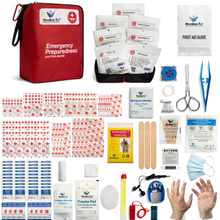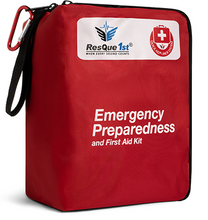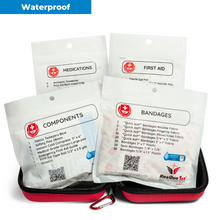
Many people have the strange idea that CPR is too complicated or risky to be attempted by the average person in the street and should only be done by a trained professional. This notion is hard to dispel, so we’ll say here what experts say: any attempt at performing CPR is better than none. Being trained is great, for sure, but don’t be afraid to make an effort.
While the American Heart Association says (correctly) that chest compressions are the most crucial aspect of CPR, they also recognize (correctly again) that doing compressions with mouth-to-mouth is even better.
But some people are reluctant to perform mouth-to-mouth, even when a life is on the line, because they’re concerned about possible infection or any blood or fluid in and on the victim. This is why your first aid kit should contain a CPR mask. It provides a barrier to ease those fears and objections, while increasing the effectiveness of CPR.
The Importance of a CPR Barrier Device
The aim of a CPR mask with a face shield or barrier is to prevent cross contamination. The person administering CPR should be protected against infection and any blood or other fluids that may be on the victim. While undergoing resuscitation, there is always the chance that the patient may eject body fluids through their mouth or nose. Meanwhile, it’s equally important that the patient be shielded from any germs the resuscitator may be carrying.
A CPR mask removes the risk of exposure to fluids, germs and viruses entirely.
A ‘Sheet’ Barrier is All You Need Out and About
There are two types of barrier devices for CPR: a molded mask and a flat barrier. No regular person is likely to carry a bulky molded mask in their first aid kit. This is the kind of barrier used by EMS (paramedics) and emergency rooms. It fits over the nose and mouth, sealing onto the face. Then the rescuer blows through a one-way valve. It’s a great device, but it takes up space and it requires training to use effectively.
A flat barrier consists of a sheet of plastic that covers the patient’s mouth and nose. The rescuer blows into a one-way valve through the middle of it. This is far easier to use and the entire device is very compact.
A Keychain CPR Mask Will Fit in ANY First Aid Kit
The American Red Cross Society recommends a CPR mask that has a face barrier sheet and a one-way resuscitation valve, and is also small enough to attach to a keyring. This is the kind of CPR mask that can fit anywhere, including in a first aid kit. You can even buy several of them inexpensively and keep a stock. (Each mask is good for one use.)
Even better, such a portable CPR mask includes simple instructions and a face guide drawn on the barrier sheet itself. This is outstanding help for anyone who has not had CPR training.
No Excuses
So, if you carry a first aid kit regularly, or even a trauma kit, that means you are prepared to help others at a moment’s notice. Be sure you’re prepared for every possibility. Fitting a keyring CPR mask into your kit is a breeze and could save a life!
Creative Commons Attribution: Permission is granted to repost this article in its entirety with credit to First Aid Shoppe and a clickable link back to this page.








